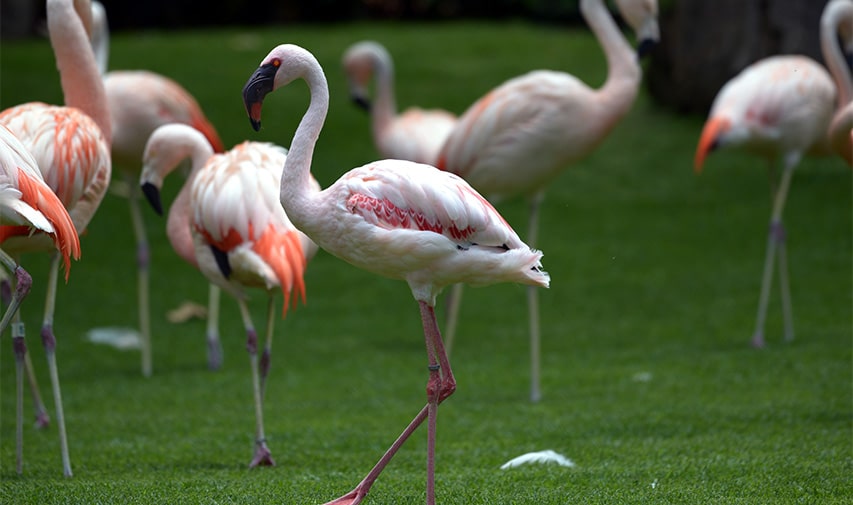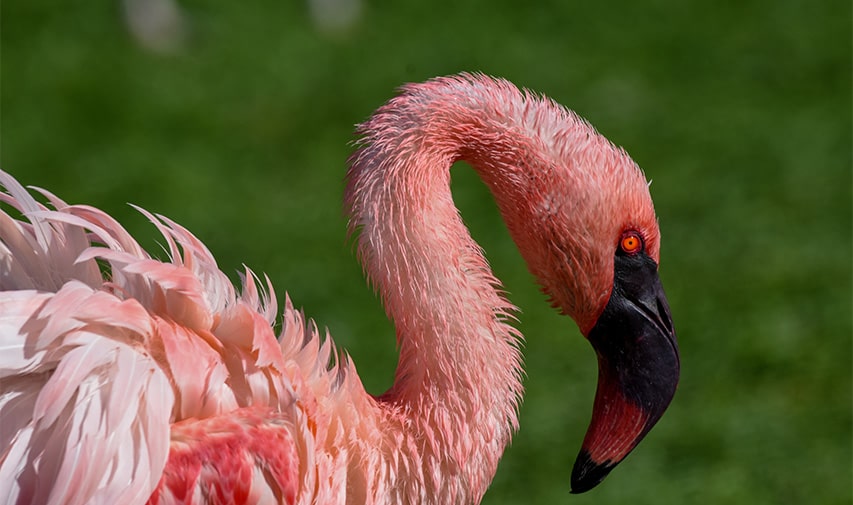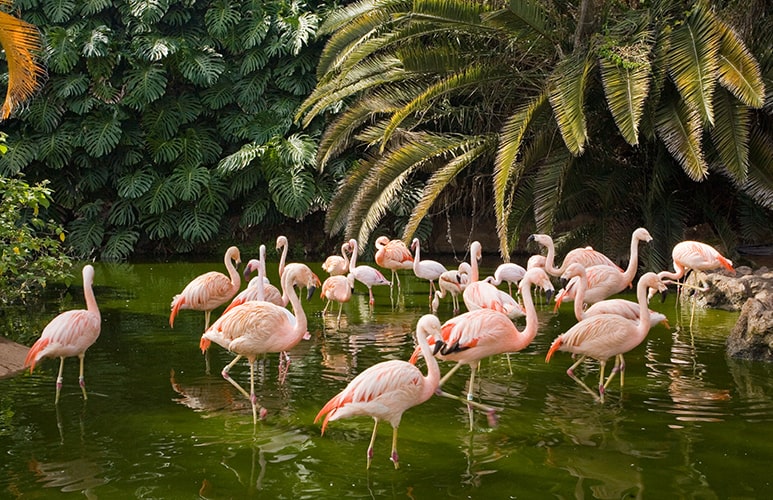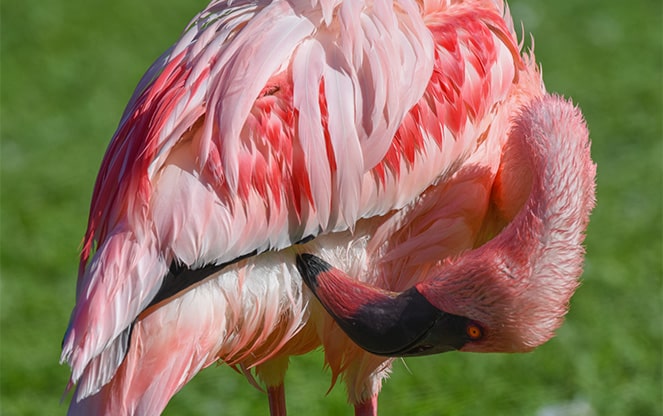Flamingo
Phoenicopterus
They are a type of bird characterised by their long legs and necks, and a beak with a distinctive curvature, ideal for foraging in the mud. They congregate in large colonies in which they form subgroups of between 3 and 6 individuals.
There are several species of flamingos, but they all have plumage ranging from pink to white.
Types of flamingos living at Loro Parque

African flamingo
Phoenicopterus roseus
The most common and largest flamingo.

Chilean flamingo
Phoenicopterus chilensis
The smallest species.

WEIGHT
2 – 4 kg

DIET
Crustaceans and algae

ORIGIN
Asia, Africa, Europe, and America

GESTATION
30 days
Interesting facts about flamingos
They are filter feeders. They dip their beaks into the mud of lakes or bodies of water and separate the food from the mud with their lamellae.
The young are born with white feathers but feeding on crustaceans turns their plumage pink.
Flamingos stand on one leg to regulate their body temperature, especially while in the water. This keeps them warm, saves energy and allows them to better defend themselves against predators.
How we help conservation of flamingos and other birds

Loro Parque has become a breeding and conservation area for flamingos from the very beginning of its activity. Although they are not endangered animals, CITES (Convention on International Trade in Endangered Species of Wild Fauna and Flora) has established that they require protection and regulation to prevent their populations from declining.
Therefore, safe and protected areas such as Loro Parque play a fundamental role in the conservation and understanding of the species.














